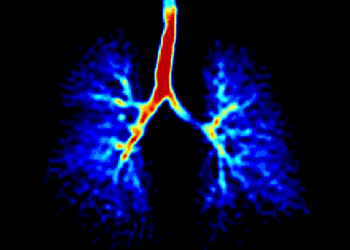Technique Found To Stabilize Pulmonary Artery Pressure in PH Animal Model

In a new study, researchers aimed to evaluate nerve distribution around the pulmonary artery — the effect of pulmonary artery denervation on an acute pulmonary hypertension porcine model — both in terms of arterial pressure and artery histology. The research paper, entitled “Pulmonary Artery Denervation Reduces Pulmonary Artery Pressure and Induces Histological Changes in an Acute Porcine Model of Pulmonary Hypertension,” was published in Circulation Cardiovascular Interventions.
Pulmonary arterial hypertension (PAH) is a life-threatening disease characterized by increased blood pressure in the pulmonary arteries that carry blood from the heart to the lungs due to blockage, narrowing, and capillary destruction. The disease includes a range of diseases, including an increase in mean pulmonary artery pressure (PAP) above the 25 mmHg at rest. Treatment usually involves vasodilator drugs or lung transplantation. Due to its the high morbidity and mortality and limited treatment options, a great deal of research has been done to develop new therapy options for PAH. The regulation of vessel musculature is a valuable option for PAH treatment, as muscle- and vessel-sympathetic nerve hyperactivity has been observed in idiopathic PAH and increased sympathetic tone has been associated with higher pulmonary artery pressures.
In this study, researchers examined nerve distribution around the pulmonary arteries and demonstrated the effect of pulmonary artery denervation (PDN), previously shown in preclinical and early clinical trials, to benefit PAH treatment. Furthermore, the scientists aimed to show the histological evidence of the effect of radio frequency PND on acute pulmonary hypertension induced by vasoconstriction. For this effect, PAH was induced in 8 pigs by intravenous infusion of a vasoconstrictor and the animals were assigned to a group for PDN treatment through radiofrequency using a catheter or the placebo group.
The results of the experiments show that the procedure was effective in managing PAH, resulting in reduction of mean PAP and induction of significant histological and biochemical changes in the nerve tissue that correlated with improved hemodynamic variables that are essential for diagnosis and prognosis of PAH.
Besides demonstrating the efficacy of this technique, the study maps the nerve distribution and depth in an animal model. Researchers conclude stating that “Although our findings do not fully replicate the complete prevention or reversal of PH previously reported, the improvement in pulmonary hemodynamics achieved would be clinically meaningful. Although PDN has shown promising early results, it is critically important that the mechanistic effects of intervention are fully evaluated in the context of chronic disease.”







